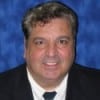“Change does not roll in on the wheels of inevitability, but comes through continuous struggle.” Martin Luther King once said.
The Healthcare delivery system is on the verge of change. It will take hard work from all of us to make it happen. I like to look at it in terms of structure and change. Structure being the underlying construct of the healthcare system and change the process by which we struggle to manifest a new delivery model. The federal Government has outlined a structure.
It is commonly called Meaningful Use, but they have also powered the process of change. That is what we currently call the HITECH portion of the recovery act. Let’s explore the structural model and tools for change in more detail.
Meaningful use is not solely about money. As I talk to my friends and colleagues these days, everyone seems to be groping for meaningful use dollars. “How do I make sure I get my full market share of meaningful use dollars,” seems to be the dictate from CEO, CFO, and CIO offices alike. Our vendors have also grasped on to this model as it seems a good avenue to sell more products, and the consulting houses recognize the potential business opportunities embedded within this demand. We have to, however, look beyond just the dollars and explore the intent of Meaningful use.
Looking at only the dollars makes meaningful use meaningless. This is true because meaningful use is about reinventing the fabric of the healthcare delivery universe. It is composed of five important elements which can be likened to the five elementary forces of the universe.
The elemental forces of nature are a balance of certain ratios. These are:
- Gravity – The universe, as we know it, would be destroyed if gravity was not in perfect balance
- Proton to Neutron Ratio – The neutron can exceed proton weight only by a certain amount
- Photon to Baryon Ratio – The photon to baryon ratio is crucial to gravitational attraction
- Nuclear Force – The atoms are held together by a precise amount of attraction
- Electromagnetic Force – No chemical bonds could form if it were different
Similarly Meaningful Use is a balance of five elements.
- Improving Safety, Quality, and Efficiency – The gravity binding the healthcare delivery universe
- Engagement of patients and families – The ratio of responsibility between provider and patient
- Coordination of Care – The crucial element of improving quality, safety, and efficiency
- Improving Population Health – The element which will hold the structure together
- Ensuring privacy and security protections – The bonds which make it all work
You may have heard these called the five pillars of meaningful use. They map out the fundamental fabric of the healthcare universe very much different from what we have today. It is this new structure upon which change in the delivery of care can be implemented. Individually none of these are new efforts to healthcare organizations, but the confluence of all five represents a unique way of redefining the delivery model for all care. By redefining the structure, recreating the universe, we can start to look at ways to change the delivery model.
With Meaningful use defining the structure, the HITECH portion of the recovery act can provide the energy for change. Changing the fabric of universe will require Dollars, Technology, People, Innovation, Information, and communication. HITECH provides all of the above. Dollars are provided via incentives.
Many argue it is not enough, but surely it is a good enough portion to get the process started. Technical Resources are available via the Regional Extension Centers, the last of which were just announced this week, and the Workforce Development Act helps to supply a pipeline of trained individuals to do the work. Grants to the states for the development of Health Exchanges will move the information, and the SHARP Grants will highlight innovative solutions to the problems at hand. The Beacon Grants become the Petri dish for proof of concept and communications.
Together the MU and HITECH work creates a model to redefine healthcare delivery and the energy to power the change. But the hard part is upon us to embrace the “continuous struggle” to make the change effective and, hopefully, inevitable.



Share Your Thoughts
You must be logged in to post a comment.